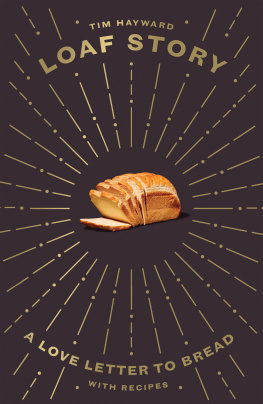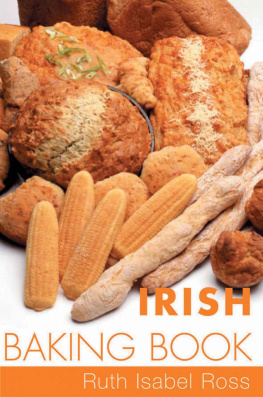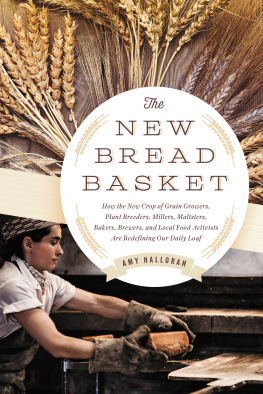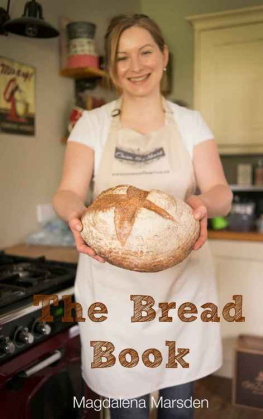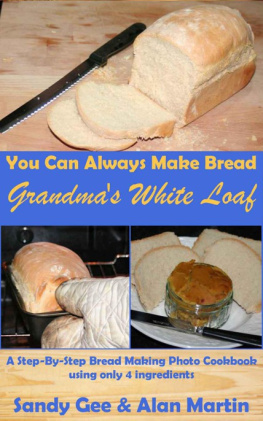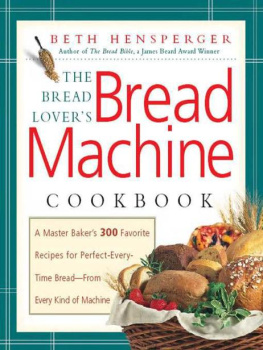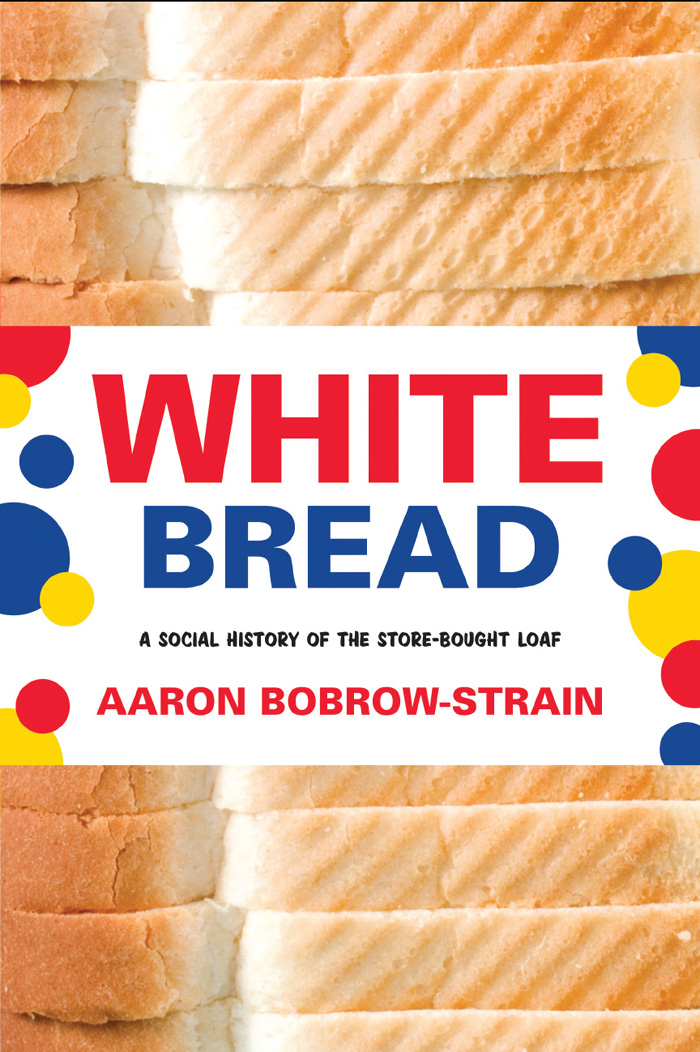WHITE BREAD
A Social History of the Store-Bought Loaf
Aaron Bobrow-Strain
BEACON PRESS BOSTON
Tis a little wonderful...
the strange multitude of little Things required in...
Providing [and] Producing...
this one Article of Bread.
Daniel Defoe, Robinson Crusoe
CONTENTS
1 Untouched by Human Hands:
Dreams of Purity and Contagion
2 The Invention of Sliced Bread:
Dreams of Control and Abundance
3 The Staff of Death:
Dreams of Health and Discipline
4 Vitamin Bread Boot Camp:
Dreams of Strength and Defense
5 White Bread Imperialism:
Dreams of Peace and Security
6 How White Bread Became White Trash:
Dreams of Resistance and Status
PREFACE
And which side does an object turn toward dreams? It is the side worn through by habit and patched with cheap maxims.
Walter Benjamin
IS THIS STUFF EVEN FOOD?
Supermarket white bread can pick up difficult bits of broken glass, clean typewriter keys, and absorb motor oil spills. Squeezed into a ball, it bounces on the counter. Pressed into my palate and revealed in a big gummy grin, it gets giggles from my kids, who can also use it to sculpt animal shapes. But should they eat it? Among its two dozen ingredients, the loaf on my desk contains diammonium phosphate, a yeast nutrient and flame retardant produced when ammonia and phosphoric acid react. Is this stuff even food?
Be careful how you answer that question. Perhaps more than any other food in the United States, what you think of sliced white bread says a lot about who you are. Over the past hundred years, it has served as a touchstone for the fears and aspirations of racial eugenicists, military strategists, social reformers, food gurus, and gourmet tastemakers. The 1960s counterculture made white bread an icon of all that was wrong with Amerika, and 1970s style arbiter Diana Vreeland famously proclaimed, People who eat white bread have no dreamsby which she meant that they dont dream the right dreams, the up-to-date, hip dreams. Because, through its long history, few foods have embodied so many dreams as industrial white bread, particularly during times of recession, war, and social upheaval.
In writing this book, I set out to uncover the social dreams (and nightmares) played out in battles over industrial white bread. I wanted to understand how one food could inspire so much affection and so much animosity; how something so ordinary could come to symbolize both the apex of modern progress and the specter of physical decay, the promise of a better future to come and Americas fall from small-town agrarian virtue. And I wanted to know how those battles over bread shaped America and its fraught relationship with food.
This turned out to be quite difficult. As important as it has beenboth as sustenance and symbolbread is not something that typically gets written about in diaries, described in letters, or remembered in oral histories. As social reformer Eleanor Bang reflected in 1951: Bread? Of course. There it is for breakfast, for lunch, for dinner in a rhythm as regular as the ticking of our electric clocksso regular wed notice it only if it stopped. Unlike other bewitching icons of industrial eating that mark the past century and a halfunlike Twinkies, TV dinners, Jell-O, and Jet-Puffed anythingbread was, and is, just bread. Of course. Industrial white bread may have been as much a marvel of modern industry and space age food chemistry as any other product, but it was also the ultimate background food, rarely discussedexcept when it went wrong.
As a result, uncovering breads place in American society required wide-ranging and creative detective work. My sources range from the letters of early twentieth-century food reformers to the records of Allied occupation forces in postwar Japan (detailing how teaching Japanese schoolchildren to eat white bread would improve their democratic spirit). Finding this material took me to far-flung libraries and archives where I read the personal papers of social reformers, advertising executives, food scientists, and industrial designers as well as the records of numerous government agencies. I traced the early history of industrial baking at the Brooklyn and New York historical societies, and spent a week in Manhattan (Kansas) immersed in the archives of the countrys oldest baking science school. I visited Chillicothe, Missouri (the Home of Sliced Bread), and Mexico City (the home of Grupo Bimbo, one of the worlds most powerful industrial baking conglomerates). Then I pored over more than a hundred years of bread advertisements and womens magazine advice columns. Perhaps most importantly, small-town newspapers, consumer marketing studies, oral histories, and community cookbooks provided invaluable insight into the silent space between expert advice and daily diet. And, through all this, I began to understand that dreams of good bread and fears of bad bread are not innocent. They channel much bigger social concerns.
This is a book about one commodityindustrial white breadthat has played an incredibly important, and largely unnoticed, role in American politics, diet, culture, and food reform movements, but it is not another story of how one food saved the world. Rather, its a history of the countless social reformers, food experts, industry executives, government officials, diet gurus, and ordinary eaters who have thought that getting Americans to eat the right bread (or avoid the wrong bread) could save the worldor at least restore the countrys moral, physical, and social fabric. Sadly, this turned out to be the difficult story of how, time and time again, well-meaning efforts to change the country through its bread ended up reinforcing forms of race, class, and gender exclusioneven when they also achieved much-needed improvements in Americas food system.
Anyone paying attention to the rising cries for slow, local, organic, and healthy food todaythe growing demands for food justice and restored community that mark our own exciting momentwill find the trials and tribulations of 150 years of battles over bread surprisingly contemporary. In them, you will see all the contradictory expressions of our own food concerns: uplifting visions of the connection between good food and healthy communities, insightful critiques of unsustainable status quos, great generosity of spirit, and earnest desires to make the world a better placebut also rampant elitism, smug paternalism, misdirected anxieties, sometimes neurotic obsessions with health, narrow visions of what counts as good food, and open discrimination against people who choose bad food. Fluffy white industrial bread may be about as far from the ideals of slow, local, organic, and health food reformers as you can get today. But, in many ways, we owe its very existence to a string of just as well-meaning efforts to improve the way America ate. Perhaps learning this history can help us avoid the pitfalls of the past.
INTRODUCTION: BREAD AND POWER
THE BREAD QUESTION
I dont remember exactly when my bread baking crossed the line from hobby to obsession. The time I nearly destroyed my oven by lining it with construction bricks might have been a warning sign. Maybe it was when bubbling, microbe-oozing jars of sourdough starter crowded out the food in my fridge. Im not sure. But I do remember exactly when I first thought about the political life of bread.
Twenty-five and living in Tucson, I had agreed in a fit of hubris to bake twenty large loaves of French country bread for a friends wedding. I had one cheap oven and no electric mixer. This was the mid-1990s and my friends and I were working as activists and community volunteers. Low-paid wouldnt quite do justice to our income bracketthe wedding dinner would be soup and bread. Lots of bread. I was making the soup too, but, in my mind, everything depended on the bread. The bread would turn a soup course into a meal. A kind of leavened alchemy would complete the table; simplicity would become celebration.


